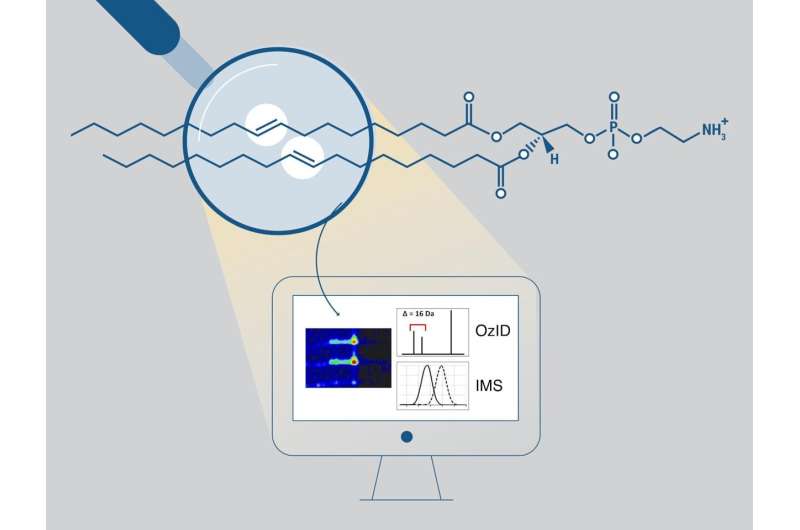This article has been reviewed according to Science X's editorial process and policies. Editors have highlighted the following attributes while ensuring the content's credibility:
fact-checked
peer-reviewed publication
trusted source
proofread
LipidOz: New software enables identification of lipid double bond locations

Lipids are a class of biomolecules that play an important role in many cellular processes. Analyses that seek to characterize all lipids in a sample—called lipidomics—are crucial to studying complex biological systems.
An important challenge in lipidomics is connecting the variety of structures of lipids with their biological functions. The positions of the double bonds within fatty acid chains is particularly important. This is because they can affect the physical properties of cellular membranes and modulate cell signaling pathways.
This information is not routinely measured in lipidomics studies because it requires a complicated experimental setup that produces complex data. Thus, scientists at Pacific Northwest National Laboratory (PNNL) developed a streamlined workflow to determine the positions of double bonds. This workflow uses both automation and machine learning approaches.
Their new method, LipidOz, streamlines the data analysis to determine the positions of double bonds. By addressing this key part of the analysis of lipids, LipidOz offers researchers a more efficient and accurate method for lipid characterization. The study is published in the journal Communications Chemistry.
The unambiguous identification of lipids is complicated by the presence of molecular parts that have the same chemical formula but different physical configurations. Specifically, the differences in these molecular parts include the fatty acyl chain length, stereospecifically numbered (sn) position, and position/stereochemistry of double bonds.
Conventional analyses can determine the fatty acyl chain lengths, the number of double bonds, and—in some cases—the sn position but not the positions of carbon–carbon double bonds. The positions of these double bonds can be determined with greater confidence using a gas-phase oxidation reaction called ozone-induced dissociation (OzID), which produces characteristic fragments.
However, the analysis of the data obtained from this reaction is complex and repetitive, and there is lack of software tool support. The open-source Python tool, LipidOz, automatically determines and assigns the double bond positions of lipids using a combination of traditional automation and deep learning approaches. New research demonstrates this ability for standard lipid mixtures and complex lipid extracts, enabling practical application of OzID for future lipidomics studies.
More information: Dylan H. Ross et al, LipidOz enables automated elucidation of lipid carbon–carbon double bond positions from ozone-induced dissociation mass spectrometry data, Communications Chemistry (2023). DOI: 10.1038/s42004-023-00867-9
Journal information: Communications Chemistry
Provided by Pacific Northwest National Laboratory





















